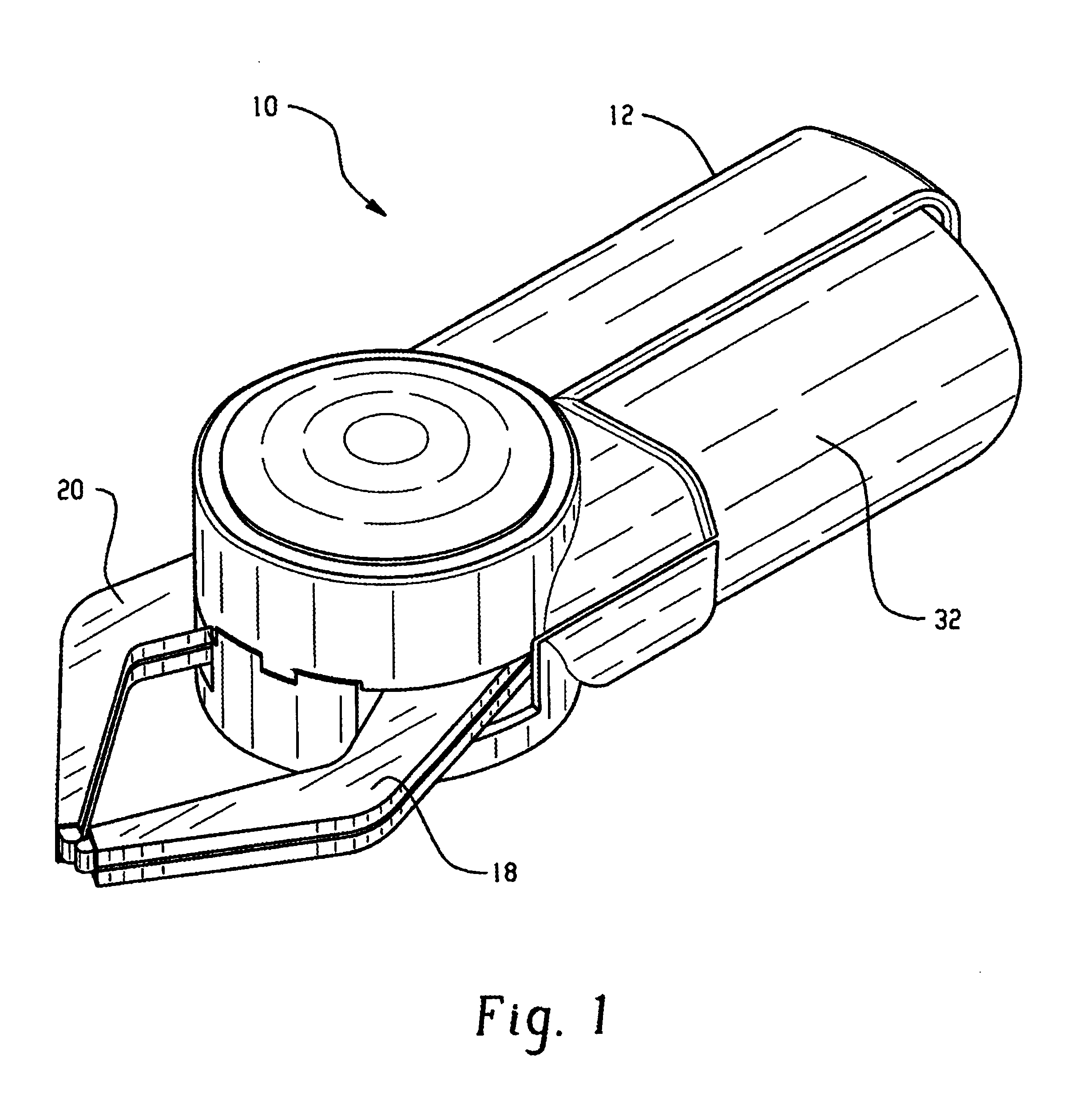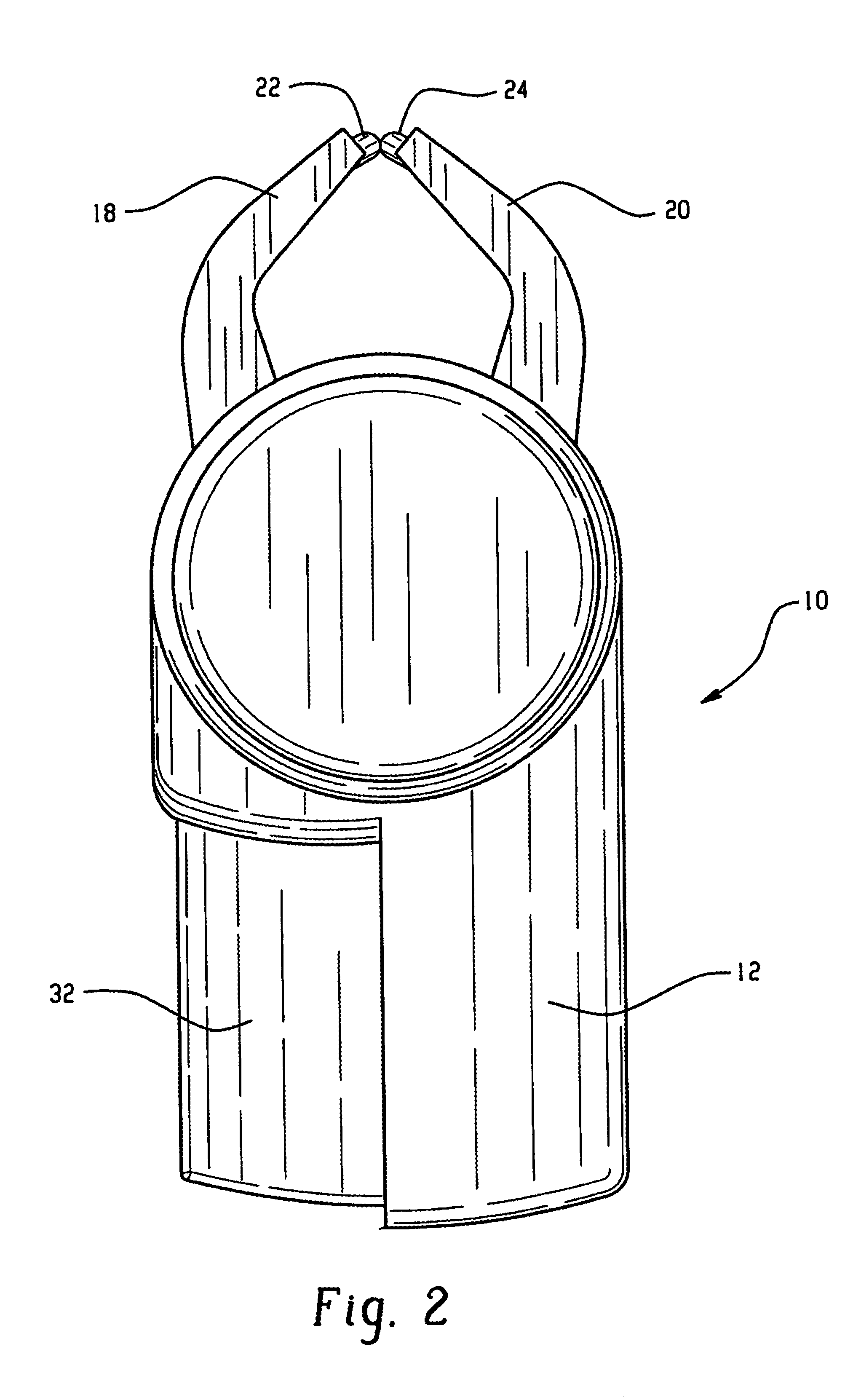Combination battery, light bulb, and fuse tester
a technology for fuses and batteries, applied in the direction of fuses testing, material impedance, instruments, etc., can solve the problems of difficult to determine the condition of bulbs or fuse merely by looking, particularly distressing, etc., and achieve the effect of accurate results, convenient use and inexpensive production
- Summary
- Abstract
- Description
- Claims
- Application Information
AI Technical Summary
Benefits of technology
Problems solved by technology
Method used
Image
Examples
Embodiment Construction
[0028]The present invention provides a combination battery, light bulb, fuse tester 10. In particular, the present invention provides a novel battery, light bulb, and fuse tester 10 which is easy to use, especially for elderly individuals, which provides accurate results, and which is inexpensive to produce. According to the invention, as best seen in FIG. 4, the battery tester 10 includes a case 12 housing a novel battery testing probe mechanism 14 comprised of two pincer-like probe arms 18,20 which may be easily manipulated to clamp a battery, fuse or light bulb (not shown) to be tested between electrical contacts 22, 24 located thereon.
[0029]Preferably, as best seen in FIGS. 5 and 6, the probe arms 18, 20 include a resiliently biased gearing mechanism 26 in order to easily move the probe arms 18, 20 towards and away from one another. The probe arms 18, 20 are controlled by an actuator 28, the actuator 28 preferably including a resiliently biased trigger 32 operatively connected t...
PUM
 Login to View More
Login to View More Abstract
Description
Claims
Application Information
 Login to View More
Login to View More - R&D
- Intellectual Property
- Life Sciences
- Materials
- Tech Scout
- Unparalleled Data Quality
- Higher Quality Content
- 60% Fewer Hallucinations
Browse by: Latest US Patents, China's latest patents, Technical Efficacy Thesaurus, Application Domain, Technology Topic, Popular Technical Reports.
© 2025 PatSnap. All rights reserved.Legal|Privacy policy|Modern Slavery Act Transparency Statement|Sitemap|About US| Contact US: help@patsnap.com



